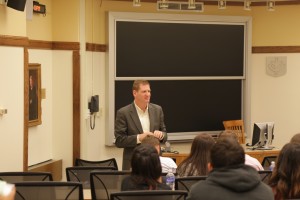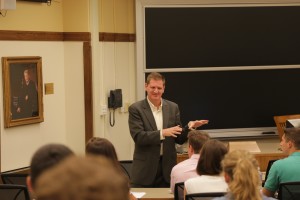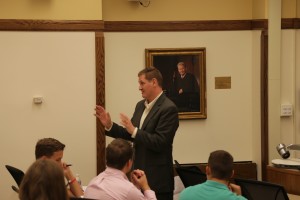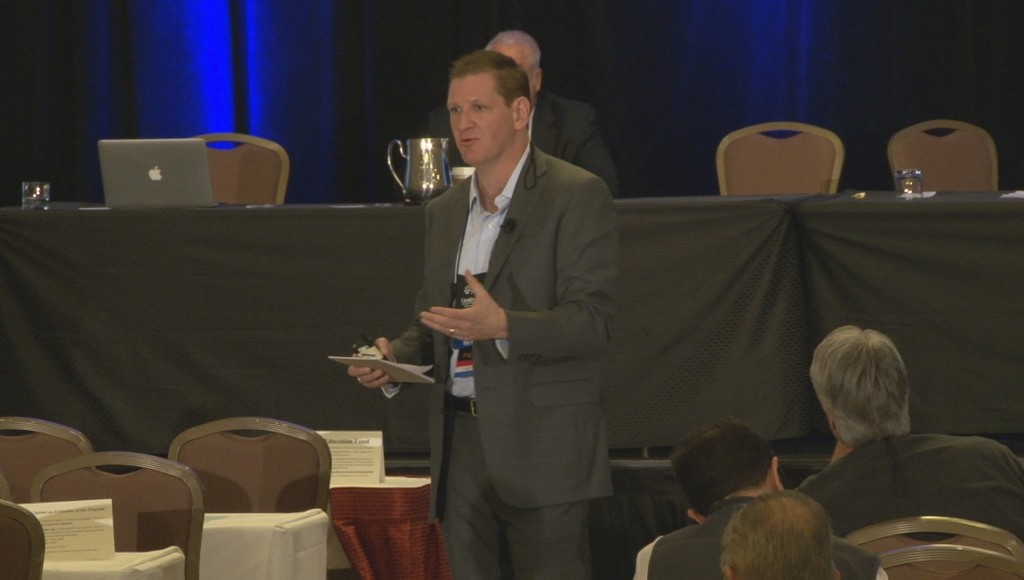A special stop at DePaul University.
Almost 26 years to the day, I started my first day of law school. I was excited, nervous and not sure what to expect. I was meeting new people, getting to know the campus and privately wondering if I’d make it through three years of intense study. There were always moments of doubt, but I knew I was making the right decision.
Roughly a week ago, I was reminded of that decision and how much I love being a lawyer. On Wednesday, DePaul University welcomed its newest crop of law students for the 2015–2016 academic year, part of the Professionalism Orientation Program, a statewide initiative that takes place annually at all nine of Illinois’ law schools. The program is designed to give students an opportunity to interact with their peers and a few experienced lawyers from around the city. The best part: it gives local attorneys like me a chance to mingle with the future of the profession.
As part of the program, an Illinois Supreme Court Justice speaks to incoming students about the responsibilities of being a lawyer. Students then take the Pledge of Professionalism, and later, they participate in a facilitated discussion (led by practicing attorneys) that touches on the ethical and moral dilemmas that often arise in the practice of law.
Our group talked about a range of topics: The process of disclosing delicate information, even if it might be detrimental to a case; the context with which deleted social media posts constitutes destroying evidence and violating ethical rules; client confidentiality; and professionalism, especially. The students voiced their thoughts on courtesy and cordialness, right and wrong, which turned into an important part of our discussion that afternoon.
Before then, I had a great conversation with members of the DePaul Law faculty and the invited attorneys who were facilitating other groups. We talked a lot about the responsibilities we have to our clients, but also to one another. I was reminded of one of my first cases as a young lawyer. I’d been working with a much more experienced colleague who’d been haggling with a defense attorney all morning. It was a heated discussion, firing on all cylinders. Two people couldn’t have been at greater odds. So it was surprising when both attorneys, after the fact, decided to grab lunch together.
I don’t expect all opposing counsels will want to break bread after a heated debate, but I was struck by the similarities in the context of the 20-or-so students that I’d been charged to lead. There were lots of passionate opinions, but respectful ones nonetheless. And when it comes down to it, respect is the most important as we work with our peers. It was nice to see that same feeling reflected during the first day of law school. The students at DePaul are embarking on a great journey, and they all seem headed in a great direction. I felt privileged to be just a small part of it.





